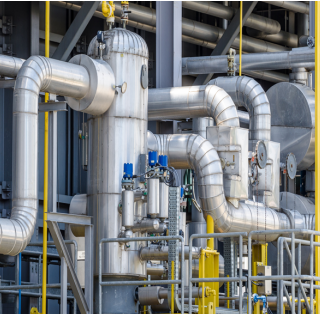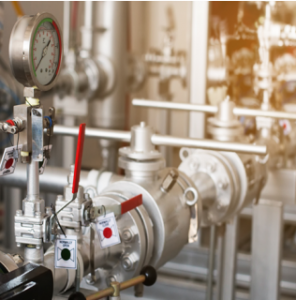
Researchers at Khalifa University’s Center for Catalysis and Separations (CeCaS) have been granted two patents for their work on the effect of magnetic fields on separating mixtures and detecting gases.
Gas separation is a process used across myriad disciplines and industries, with use cases ranging from purifying natural gas and removing carbon dioxide to producing oxygen for medical use and nitrogen for chemical feedstocks. There are various ways of separating gases in a mixture, including absorption, distillation, and membrane separation.
Dr. Georgios Karanikolos, Associate Professor of Chemical Engineering, developed a new method for gas separation, using magnetic fields, and a new technology for measuring gas sorption selectivity and detecting gas impurities. The research was initiated in collaboration with the Abu Dhabi National Oil Company (ADNOC) and continues under the umbrella of the CaCaS center of KU in collaboration with the Demokritos National Research Center in Greece.
Magnetic Swing Absorption for Industrial Gas Processing
“Sorption and desorption are typically controlled by swings in temperature or pressure, or both in combination,” Dr. Karanikolos said. “In our technology, a magnetic field swing is introduced. By switching the magnetic field on and off, gas is absorbed and desorbed without externally changing temperature or pressure, which is a great novelty in this area.”
Examples of application of gas separation are the removal of carbon dioxide from steam methane reforming gas mixtures and as the final step in the large-scale commercial production of hydrogen, which is important for the production of ammonia. Air separation is carried out to produce pure oxygen, while oil refineries and gas processing plants apply separation technologies in hydrocarbon fractionation and in the removal of hydrogen sulfide, a toxic byproduct of certain refinery processes.
However, gas separation processes typically require generating high temperatures for heat-assisted absorbent regeneration, pumping liquid absorbents between absorption towers and regeneration towers, processing and handling of byproducts, repairing absorbent leakage problems, and replenishing the lost absorbent. In addition to being energy intensive, these processes contribute significantly to the operational cost of a gas separation process, according to Dr. Karanikolos. Gas separation processes with lower energy requirements and lower operational costs would be a substantial advancement in this area.
“Conventional gas separation processes have high energy requirements,” Dr. Karanikolos said. “Magnetic swing absorption can be far less energy consuming, particularly if the magnetic field used in these cycles is generated by permanent magnetic assemblies. In order to turn the field on or off, these permanent magnets can either be mechanically added to or removed from the absorption cell, or simply switched on and off if they have a permanent magnet switch.”
In this method, a gas mixture is introduced to a magnetic field – responsive liquid and a magnetic field is applied. One of the gases is absorbed into the liquid, effectively separating the gas mixture. Once the non-absorbed gas is purged from the system, the magnetic field is removed or switched off, and the absorbed gas releases.
Magnetic-based Determination of Sorption Separation and Smart Gas Sensor
Dr. Karanikolos was also awarded a patent for his work on a smart gas sensor to detect impurities and analyze gas mixtures. His technology provides an easy way of measuring gas sorption selectivity: the ratio of adsorbed amounts of two gases being simultaneously adsorbed to the same sample, and can also operate as a gas sensor under certain conditions.

“Gravimetric microbalance is commonly used to measure the amount of adsorbed gas on sorbent materials,” Dr. Karanikolos said. “Our invention offers a low-cost gas sensing and measuring device, using a modified gravimetric microbalance, in which the hanging sample holder is located in a space where a magnetic field can be turned on and off. This allows us to measure the ratio of adsorbed gases that are simultaneously adsorbed to the same sorbent surface so we can calculate the real adsorbent selectivity.”
This new device and sensor is low-cost and rapid, replacing conventional chromatographic techniques for fast and easy continuous monitoring of gas concentration. It offers a single-step solution to gas analysis and can also measure magnetic susceptibility of the gases in a mixture.
Jade Sterling
Science Writer
1 June 2022






